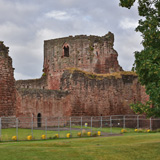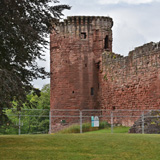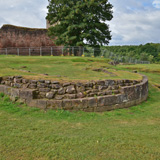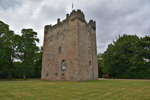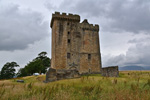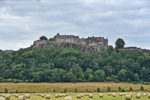History
Bothwell Castle resides on the banks of the River Clyde in Lanarkshire, Scotland. It was built by the Moravia family (later Moray), who began constructing the Great Tower, or donjon, in the 1270s. They also owned Duffus Castle in Northern Scotland. In the 1290s, the castle was taken by the English after the deposition of John Balliol, but the castle was retaken by the Scots in 1297 after a 14-month siege.
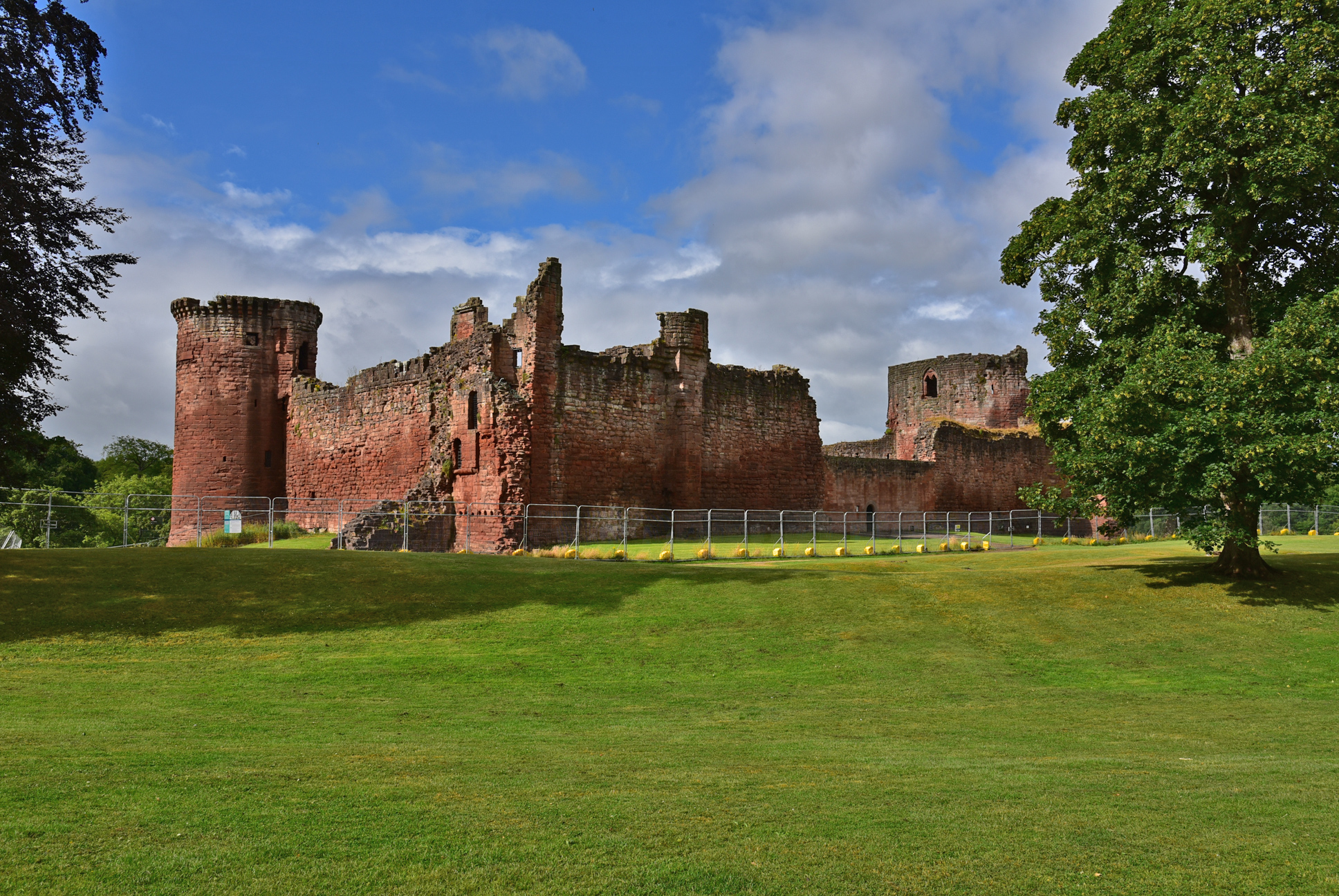
In August of 1301, King Edward I of England brought 6,800 soldiers to lay siege to the castle using a giant engine called le berefrey (the belfry), which was a tall wooden tower with ladders inside that was placed next to the castle, enabling the English soldiers to fight their way onto the castle battlements and retake the castle. The Bothwell Castle became the headquarters of Aymer de Valence, Earl of Pembroke and Edward I's Warden of Scotland. After Robert the Bruce's victory at Bannockburn in 1314, the Scots retook Bothwell Castle, and the donjon was partially demolished to prevent it from being defensible by the English in the future.
In 1336, Bothwell Castle was retaken and rebuilt by the English. Edward III used the castle as his headquarters, which led to the restoration of the donjon and the addition of the hall. This was also short-lived as the Scots, led by Sir Andrew Murray, retook the castle in 1337 and partially demolished it again. The last Murray to hold the castle died of the plague around 1360. In 1362, the castle passed through marriage to Archibald the Grim, 3rd Earl of Douglas and Lord of Galloway, who restored much of Bothwell Castle and added a chapel and a new section of curtain wall.
After the forfeiture of the Black Douglases in 1455, Bothwell Castle was granted to the Crichtons, who then also forfeited it, passing it to Sir John Ramsay of Balnain. Sir John also lost his title and castle by forfeiture after following James III in defeat at the Battle of Sauchieburn in 1488. The castle was then held by Patrick Hepburn of Dunsyre, Lord Hailes, and future Earl of Bothwell, who exchanged the castle for Hermitage Castle with the Douglases in 1492. King James IV would visit Bothwell Castle in 1503 and 1504.
In the 17th century, Archibald Douglas, 1st Earl of Forfar, built Bothwell House near the castle, resulting in some of the castle being dismantled and used in making the new manor. Bothwell Castle passed to the Homes family in the 19th century and was then placed in the care of the State in 1935, who have since repaired part of the curtain wall and now keep the castle from falling into a further ruinous state.
Castle Highlights
Bothwell Castle is one of the largest stone castles in Scotland and stands out from most other Scottish castles due to its red sandstone. Another feature even more unique to Bothwell Castle is the moated donjon or Great Tower, which initially stood 80 feet in height with a width of 65 feet. Although now half destroyed, enough remains to understand how imposing the castle must have been to adversaries.
Bothwell Castle's curtain walls rise to 60 feet high, with two towers opposite the donjon. The Hamilton Tower is gone, with only a square foundation left, while the Douglas Tower remains. In the castle courtyard, stone foundations outline where the hall and chapel once stood. Outside the curtain wall are the remnants of the Barbican towers, for which history is unclear whether they were started but never built or built and later destroyed. Either way, just enough foundations remain to outline the width of the towers.
Bothwell Castle can be thoroughly explored in an hour or two. Head north to Doune Castle or Clackmannan Tower to see a second castle on the same day.
